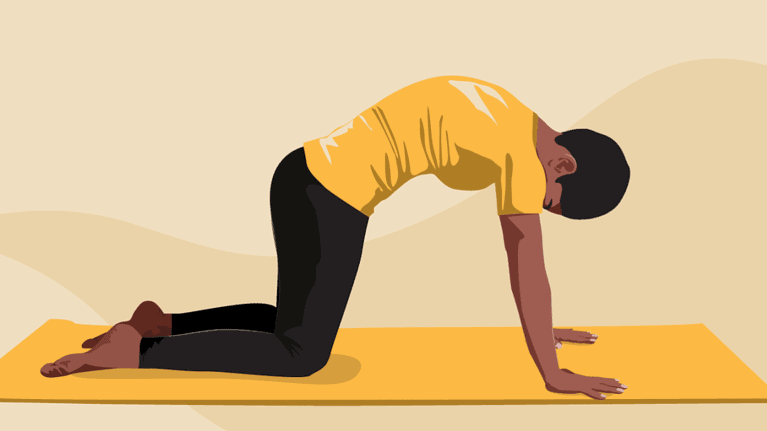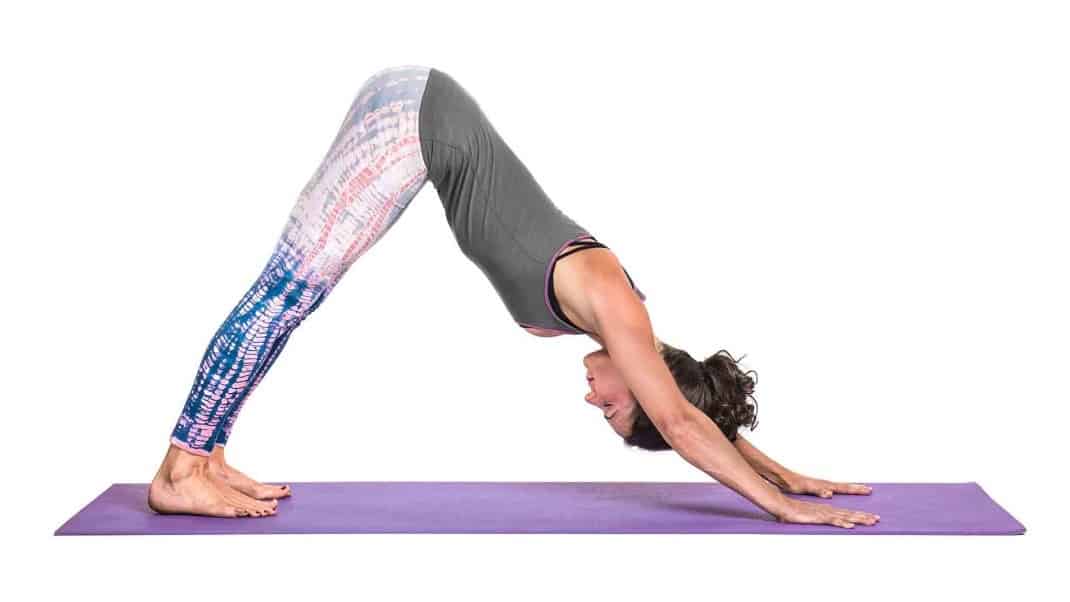In today’s fast-paced world, stress has become a common part of our lives. From work pressures to personal responsibilities, it’s easy to feel overwhelmed and anxious. However, incorporating a yoga routine for stress management into your daily life can be a powerful tool for your inner peace.
Not only does yoga provide physical benefits, but it also promotes relaxation, improves sleep quality, and increases mindfulness.
In this article, we will explore the benefits of yoga for stress management, the best yoga poses for stress relief, how to create a stress-relieving yoga routine, and some tips for practicing yoga effectively.
Benefits of yoga for stress management
Reduces cortisol levels
One of the key benefits of yoga for stress management is its ability to reduce cortisol levels. Cortisol is a hormone that is released in response to stress, and high levels of cortisol can contribute to anxiety and other stress-related symptoms. Yoga has been shown to lower cortisol levels, helping to alleviate stress and promote a sense of calm.
Promotes relaxation
Yoga is known for its ability to promote relaxation. Through a combination of deep breathing, gentle movements, and mindfulness, yoga helps activate the body’s relaxation response. This response triggers a decrease in heart rate, blood pressure, and muscle tension, leading to a state of deep relaxation and tranquility.
Improves sleep quality
Stress often disrupts our sleep patterns, making it difficult to fall asleep or stay asleep throughout the night. Yoga can help improve sleep quality by reducing stress and promoting relaxation. Certain yoga poses and breathing exercises can calm the mind and prepare the body for a restful night’s sleep.
Increases mindfulness
Mindfulness is the practice of being fully present in the moment, without judgment or attachment. It allows us to observe our thoughts and emotions without getting caught up in them. Yoga encourages mindfulness by focusing on the breath and the sensations in the body. By cultivating mindfulness through yoga, we can better manage stress and develop a greater sense of self-awareness.
Best yoga poses for stress relief
Child’s Pose
Child’s Pose is a gentle resting pose that helps release tension in the back, shoulders, and neck. It promotes relaxation and can be a soothing pose to practice when feeling overwhelmed or stressed.
Forward Fold
Forward Fold is a standing pose that stretches the hamstrings and releases tension in the spine. It also calms the mind and helps relieve stress and anxiety.
Downward Facing Dog
Downward Facing Dog is a full-body stretch that strengthens the arms, shoulders, and legs. It also helps calm the mind and relieve stress by allowing blood to flow to the brain.
Legs Up the Wall
Legs Up the Wall is a restorative pose that promotes relaxation and reduces anxiety. It helps improve circulation and allows the body to rest and rejuvenate.
Corpse Pose
Corpse Pose is a final relaxation pose that allows the body and mind to fully relax. It helps reduce stress, lower blood pressure, and promote a sense of calm and well-being.
Creating a stress-relieving yoga routine
Start with deep breathing exercises
Begin your yoga routine by practicing deep breathing exercises. Deep breathing activates the body’s relaxation response and helps calm the mind. Take slow, deep breaths in through the nose, filling the belly with air, and exhale slowly through the mouth.
Incorporate gentle warm-up poses
Before diving into more intense poses, warm up your body with gentle stretches and movements. This helps prepare the muscles and joints for the practice and reduces the risk of injury. Gentle warm-up poses can include gentle neck rolls, shoulder rolls, and gentle twists.
Include stress-relieving poses
Incorporate stress-relieving poses such as Child’s Pose, Forward Fold, Downward Facing Dog, Legs Up the Wall, and Corpse Pose into your yoga routine. These poses help release tension, promote relaxation, and reduce stress.
End with a relaxation pose
Finish your yoga routine with a relaxation pose such as Corpse Pose. Allow your body and mind to fully relax and absorb the benefits of your practice. Stay in the relaxation pose for a few minutes, focusing on your breath and letting go of any remaining tension or stress.
Here’s a sample yoga routine focused on stress management that you can copy:
| Time | Yoga Practice and Focus | Duration |
|---|---|---|
| 8:00 AM | Deep Breathing and Mindfulness: Begin with deep, conscious breathing, bringing awareness to each breath. | 5 mins |
| 8:05 AM | Cat-Cow Pose: Flow between cat and cow poses, syncing breath with movement to release tension in the spine. | 5 mins |
| 8:10 AM | Child’s Pose: Relax in Child’s Pose, focusing on deep breaths and surrendering stress and tension. | 5 mins |
| 8:15 AM | Sun Salutations (Surya Namaskar): Energize the body and mind with several rounds of sun salutations, synchronizing breath and movement. | 10 mins |
| 8:25 AM | Seated Forward Bend (Paschimottanasana): Stretch forward to calm the mind and relieve stress in the back and neck. | 5 mins |
| 8:30 AM | Corpse Pose (Savasana): End the session with deep relaxation in Savasana, allowing the body and mind to rejuvenate. | 10 mins |
Notes:
- Deep Breathing and Mindfulness: Initiate the routine by focusing on the breath, bringing present-moment awareness.
- Cat-Cow Pose: Encourage gentle movement to release tension and warm up the body.
- Child’s Pose: Promote relaxation and stress reduction through this comforting pose.
- Sun Salutations: Energize the body and cultivate a mind-body connection through a flowing sequence.
- Seated Forward Bend: Encourage a forward fold to stretch the spine and calm the mind.
- Corpse Pose: Conclude the practice with complete relaxation to absorb the benefits and reduce stress.
Great Yoga Mat Towel – Yogitoes
About this product:
- Anti-Slip Bottom: Patented Skidless Technology with silicone nubs for superior grip during hot and sweaty yoga.
- Yoga Support: Ultra absorbent, quick-drying, and sustainable Yogitoes in beautiful designs.
- Eco-Friendly: Made from at least four recycled plastic bottles, reducing energy consumption, and free from harmful dyes.
Tips for practicing yoga for stress management
Find a quiet and comfortable space
When practicing yoga for stress management, it’s important to find a quiet and comfortable space where you can fully focus on your practice. Choose a room or area where you won’t be easily distracted and create a calming atmosphere with soft lighting and soothing music if desired.
Use props for support and comfort
Props such as yoga blocks, blankets, and straps can be used to support your body and enhance your comfort during yoga poses. They can help you maintain proper alignment and prevent strain or injury. Use props as needed to make your practice more accessible and enjoyable.
Listen to your body and modify poses as needed
Every body is different, and it’s important to listen to your body’s needs during your yoga practice. If a pose feels uncomfortable or causes pain, modify it or skip it altogether. Honor your body’s limitations and focus on finding a balance between effort and ease.
Practice regularly for best results
Consistency is key when it comes to reaping the benefits of yoga for stress management. Aim to practice yoga regularly, even if it’s just for a few minutes each day. By making yoga a part of your routine, you’ll gradually build strength, flexibility, and resilience to stress.
Conclusion
Incorporating a yoga routine into your life can be a game-changer when it comes to managing stress. The benefits of yoga for stress management are numerous, including reduced cortisol levels, increased relaxation, improved sleep quality, and enhanced mindfulness.
By practicing stress-relieving yoga poses and creating a routine that suits your needs, you can find solace and peace amidst the chaos of daily life. So roll out your mat, take a deep breath, and let yoga guide you on a journey towards stress-free living.
Originally posted 2023-01-27 08:46:27.









